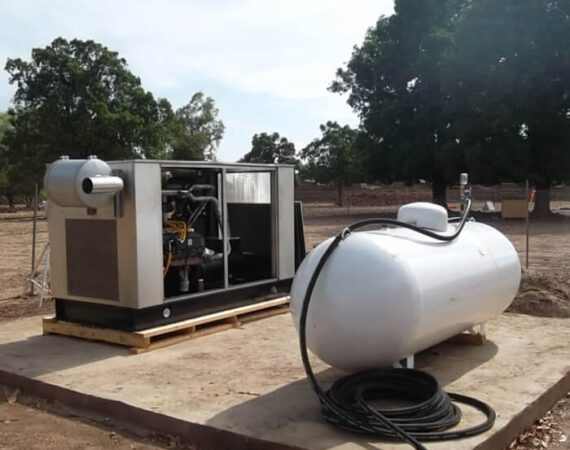AVALIO– The first deep-seated natural hydrogen exploration company in Australia
The most important practical outcome of the Primordially Hydridic Earth (PHE) concept: Hydrogen in the nature is far more abundant – 4%wt of the Earth mass – than originally assigned by the current mainstream model. Moreover, hydrogen keeps degassing from the deeper geospheres – the core and the mantle – through the entire history of the planet development.
Natural hydrogen degassing manifestations are known for several centuries, if not for millennia – check out the Chimaera Mountain in Turkey, where H2 concentrations exceed 11%.
A so-called eternal flame flickers between rocks at Turkey’s Olympos Beydağları National Park. Courtesy The New York Times, 1 May 2019, via Getty Images.
Understanding the natural hydrogen prominence subject is complicated by a number of concepts currently debated by the academia. However, the scientific community is unanimous in the opinion that natural hydrogen is a very promising source of energy, and its potential in the global economy balances is extremely encouraging.
According to the PHE concept, hydrogen flows from the deep geospheres evolve with time: adjacent streams merge, resulting in more “packed” jets which are shaped like “chimneys”:
Hydrogen streams evolution in the metal-sphere with time (cross-section). From V. N. Larin. Our Earth, 2005
If found at the depths accessible by conventional drilling, these “chimneys” may become the long-term source of affordable hydrogen.
Therefore, carbon net-zero, economically viable “fuel of the future” can be extracted from the Earth utilizing technologies readily available today, thanks to the Petroleum industry developments.
Natural hydrogen degassing is routinely observed at the mid-ocean ridges, or MORs, for several decades – yet remaining inaccessible for humans, due to the current (under)developed technology level.
Worry not, hydrogen manifestations on the surface are registered on all continents in almost every tectonic context: rifting zones, cratonic margins, intra-cratonic mobile belts, and orogenic systems. Since Hydrogen, being the lightest element in the universe, is extremely mobile, it does not form “deposits” sitting pretty in the “traps”, like hydrocarbons do. This makes the natural hydrogen exploration approach based on Oil & Gas industry algorithms hardly applicable. (Some of our respectful colleagues from academia call this “the knowledge gap”).

Map of Avalio founder activities
These manifestations take multiple geomorphological shapes. Identifying them becomes an interesting task, which requires out-of-the-box thinking and “bottom-up” approach. The latter includes analyzing various types of data and synthesizing it into tangible results.
Hence, the task of finding the commercial source of natural hydrogen becomes a kind of tricky. Yet, the research based on the resilient Primordially Hydridic Earth concept combined with several decades of research, field data acquisition and analysis, proves to deliver promising results.
Our team is prepared to handle the tasks set up by our business partners, both in the field, in the lab, and in front of the investors panel.
The existing technologies used for hydrogen production do not address the key issues:
- Currently, over 90% of hydrogen used by the humanity are produced from methane through the thermal gas reforming. This so-called “brown” hydrogen leaves a substantial carbon trace. CCS steps turning it into the “blue” hydrogen drive the costs up, at the same time still failing to address the emissions issue, see R. Howarth, M. Jacobson. How green is blue hydrogen, 2021 https://www.researchgate.net/publication/353841896

Comparison of carbon dioxide equivalent emissions, R. Howarth, Mark Jacobson. How green is blue hydrogen, 2021
- “Green” hydrogen from electrolysis is extremely expensive, with EROI not exceeding 66%: https://manhattan.institute/article/green-hydrogen-a-multibillion-dollar-energy-boondoggle. To the major part being subsidized by the taxpayers (in Australia – by 70% to 75% https://reneweconomy.com.au/australia-has-38gw-of-green-hydrogen-in-pipeline-but-major-cost-falls-needed/ ). Besides, it does not resolve the carbon trace issue, either: https://www.anu.edu.au/news/all-news/%E2%80%9Cserious-threat%E2%80%9D-of-fugitive-emissions-with-hydrogen-plan – not to mention other environmental problems, e.g. those associated with de-salinization if water used for hydrogen production.
Only natural, a.k.a. “white” or “gold”, hydrogen seems to be the only plausible answer, providing cost-effective and net-zero solution. According to the number of sources, e.g. https://www.hydrogeninsight.com/innovation/analysis-will-natural-hydrogen-extracted-from-the-ground-be-the-next-global-gold-rush-/2-1-1346871, the lifting cost of natural hydrogen from Bougou-1 well in Mali is around US$0.50 per kg – six times lower than the commercially acceptable break-even threshold of US$3.00 per kg.

110m deep Bougou-1 well producing approx. 130 kg pday H2 since 2011. From https://hydroma.ca/activities-natural-hydrogen/
Invite partners to watch the activities of Pacific Group Co., Ltd.
FanPage: https://www.facebook.com/Pacific-Group
YouTube: https://www.youtube.com/@PacificGroupCoLt






